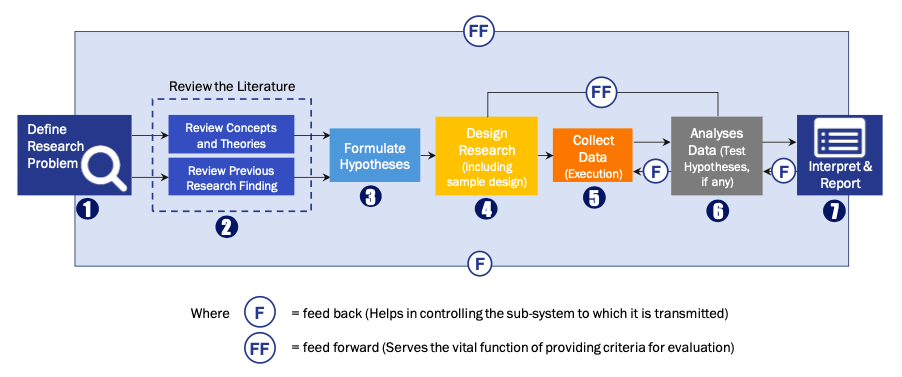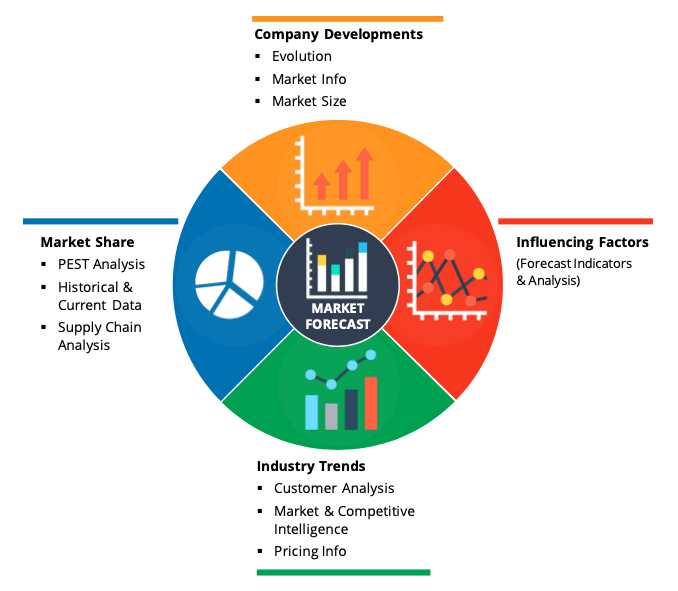The Global Facility Management Services Market is currently valued at USD 1.5 trillion in the year 2022, and is expected to register a CAGR of 5.2% over the forecast period, 2023-2030.

Get Complete Analysis Of The Report - Download Free Sample PDF
Facility management (FM) services involve the management of building upkeep, utilities, maintenance operations, waste services, security, etc. These services are further segmented by hard facility management services and soft facility management services. The adoption of FM solutions and services is likely to be driven by several factors, including an increase in demand for cloud-based FM solutions and a rise in demand for FM systems linked to intelligent software.
With the increasing investments in healthcare infrastructure and the construction of healthcare facilities, the demand for FM services is rising. In recent times, infrastructure has become a crucial element in providing healthcare to the public. Hence, there has been an increased investment in the development of healthcare infrastructure across the world. Healthcare organizations are significantly investing in facilities to deliver advanced healthcare services.
There is a significant global trend toward sustainability spurred by a common challenge: finding ways to make facility management more cost-effective. The solution lies in adopting a paperless approach. Mobile technology can oversee energy usage, track the performance of assets, and schedule timely maintenance. Also, core HVAC, electrical, engineering, and safety systems are all being upgraded to be more energy efficient, more interconnected, and increasingly integrated with IoT systems via building information systems, which monitor functions and report data to operations management platforms.
Segmentation:
The Facility Management Market is Segmented
By Type
By Offerings
By End-User
Geography
The value is provided (in USD million) for the above segments.

For Detailed Market Segmentation - Download Free Sample PDF
Drivers:
Increasing Investments in Healthcare Infrastructure and the Construction of Healthcare Facilities
The increase in the adoption of cloud-based solutions and changes in organizational culture and work style boost the growth of the global facility management market. In addition, the introduction of innovative products and the adoption of various strategies by key vendors positively impact the growth of the facility management market. Furthermore, technological developments are expected to drive the growth of the studied market. For instance, in February 2022 Farnek, an innovative green facilities management (FM) firm based in the United Arab Emirates, created a new smart FM technology solutions company. The HITEK solution 4.0, developed in-house, was initially launched in Q3 last year, connecting people, assets, and spaces from multiple remote sites, using intelligent analytical platforms for cleaning, security, and maintenance, so they could be smartly centrally managed and monitored by leveraging the Internet of Things (IoT), Building Management Systems (BMS), Cloud, Machine Learning (ML), and Artificial Intelligence (AI) based technologies. Thus, the market is expected to witness significant growth over the forecast period.
Requirement of Building Information Modeling (BIM) in Commercial Buildings Addresses the Growth
BIM project specifications and shared documents can largely guide and simplify fabrication through this phase. Operation: When it comes to operations and maintenance, BIM's information-rich models and asset data can support operations, maintenance, refurbishment, extension, and even demolition. Thus, due to the benefits associated by BIM the market is expected to witness significant growth over the forecast period.
Restraints:
Increased instances of Data Breaches and Security Threats
The risk of a data breach increases the more people have access to it and the more ways there are to access it. Hacking attacks may well be the most common cause of a data breach but it is often a weak or lost password that is the vulnerability that is being exploited by the opportunist hacker. Thus, an increase in hacking may slow down the growth of the studied market.
The outbreak of COVID-19 has had a mixed business impact on facilities management firms. The restrictions on the movement of people resulted in a decline in project work and a decreased level of activity across many customer sites. Significant players in the market studied, such as Mitie, CBRE Group, and others, were adversely affected due to the pandemic lockdown
Segmental Analysis:
Integrated Facility Management to Witness Higher Growth Rate
There is a paradigm shift in the market as multiple industries are transforming from utilizing a single FM outsourcing type of model to an integrated services model that can meet all customers' core needs on a large scale. In addition, with newer technology transforming the way organizations work, integrated facility management has become the key to smart buildings and work environments.
It consolidates the organization's office- and property-related services and processes under a single contract and management team. It is a one-stop shop for all the FM needs of an organization. A company could forego multiple, confusing vendor contracts favoring just one service agreement. This would also involve placing multiple responsibilities handled individually by different teams under a single umbrella. Thus, the segment is expected to witness significant growth over the forecast period.
The Hard Facility Management Services Segment is Expected to Witness Significant growth over the Forecast Period
Hard FM services relate to the physical structure of the building. They affect the safety and welfare of employees and visitors, and as such, are required by law. In other words, you must have hard FM services; they're non-negotiable. Hard FM services include Gas, plumbing, and heating. These services ensure that the health, safety, and well-being of your employees are paramount, helping them to feel comfortable at work. Thus, due to these benefits, the segment is expected to witness significant growth over the forecast period.
The Industrial Segment is Expected to Witness Significant Growth Over the Forecast Period
The facility management services provide basic facilities that are well-maintained and do maintenance in the industries. Handling emergencies as they happen and keeping track of money. Checking to make sure that the facility meets government and compliance standards. Planning for the future by predicting the needs and requirements of the facility. Thus, the segment is expected to witness significant growth over the forecast period.
Middle East and Africa is Expected to Witness Significant Growth
Qatar and Saudi Arabia's facility management markets are witnessing significant growth, and companies need to innovate their offerings to keep growing and remain profitable. However, residential, commercial, industrial, and public infrastructure sectors are the primary sectors likely to drive the studied market.
According to Qatar’s Ministry of Finance, infrastructure projects are allocated QAR 74 billion, which is approximately 36.0% of the state’s interest in accomplishing the major development projects on schedule, especially those related to hosting the FIFA World Cup Qatar 2022. Furthermore, the ministry emphasized a special focus on two key sectors, namely education and healthcare, which is expected to witness the development and expansion of schools and educational institutions and healthcare projects and programs. Nearly QAR 17.8 billion has been earmarked for education, while about QAR 20 billion has been allocated for the health sector. Thus, the studied market in the region is expected to witness significant growth over the forecast period.

Get Complete Analysis Of The Report - Download Free Sample PDF
Competitive Landscape:
The Facility Management Market is highly fragmented, with local and international players having decades of industry experience. The FM vendors are incorporating a powerful competitive strategy by leveraging their expertise. Also, they are spending a large chunk of the amount on advertising. The FM companies are incorporating technologies into their services, strengthening their service portfolio. Some of the major players working in this segment are:
Recent Developments:
1) June 2022 - Imdaad, a group of companies based in Dubai that offers integrated, sustainable facilities management services that improve operational efficiencies of physical assets, has officially formed a new joint venture with LMD, a prominent real estate provider in Egypt, to provide a full range of quality facility management solutions across the entirety of Egypt.
2) March 2022 - NHS Shared Business Services (NHS SBS) launched the Hard Facilities Management framework agreement. This is the second in a series of Hard Facilities Management frameworks developed by the organization. It is designed to consider the need for creative solutions within the NHS, with this second version having a broader scope that now includes COVID-19 safety provisions and a focus on innovation.
Q1. What is the current Facility Management Market size?
The Global Facility Management Services Market is currently valued at USD 1.5 trillion.
Q2. What is the Growth Rate of the Facility Management Market?
Facility Management Market is expected to register a CAGR of 5.2% over the forecast period.
Q3. Which Region is expected to hold the highest Market share?
Middle East and Africa Region is expected to hold the highest Market share.
Q4. What are the factors on which the mango Facility Management Market research is based on?
By Type, By Offerings, End User and Geography are the factors on which the mango Facility Management Market research is based.
Data Library Research are conducted by industry experts who offer insight on industry structure, market segmentations technology assessment and competitive landscape (CL), and penetration, as well as on emerging trends. Their analysis is based on primary interviews (~ 80%) and secondary research (~ 20%) as well as years of professional expertise in their respective industries. Adding to this, by analysing historical trends and current market positions, our analysts predict where the market will be headed for the next five years. Furthermore, the varying trends of segment & categories geographically presented are also studied and the estimated based on the primary & secondary research.
In this particular report from the supply side Data Library Research has conducted primary surveys (interviews) with the key level executives (VP, CEO’s, Marketing Director, Business Development Manager and SOFT) of the companies that active & prominent as well as the midsized organization
FIGURE 1: DLR RESEARH PROCESS

Extensive primary research was conducted to gain a deeper insight of the market and industry performance. The analysis is based on both primary and secondary research as well as years of professional expertise in the respective industries.
In addition to analysing current and historical trends, our analysts predict where the market is headed over the next five years.
It varies by segment for these categories geographically presented in the list of market tables. Speaking about this particular report we have conducted primary surveys (interviews) with the key level executives (VP, CEO’s, Marketing Director, Business Development Manager and many more) of the major players active in the market.
Secondary ResearchSecondary research was mainly used to collect and identify information useful for the extensive, technical, market-oriented, and Friend’s study of the Global Extra Neutral Alcohol. It was also used to obtain key information about major players, market classification and segmentation according to the industry trends, geographical markets, and developments related to the market and technology perspectives. For this study, analysts have gathered information from various credible sources, such as annual reports, sec filings, journals, white papers, SOFT presentations, and company web sites.
Market Size EstimationBoth, top-down and bottom-up approaches were used to estimate and validate the size of the Global market and to estimate the size of various other dependent submarkets in the overall Extra Neutral Alcohol. The key players in the market were identified through secondary research and their market contributions in the respective geographies were determined through primary and secondary research.
Forecast Model
